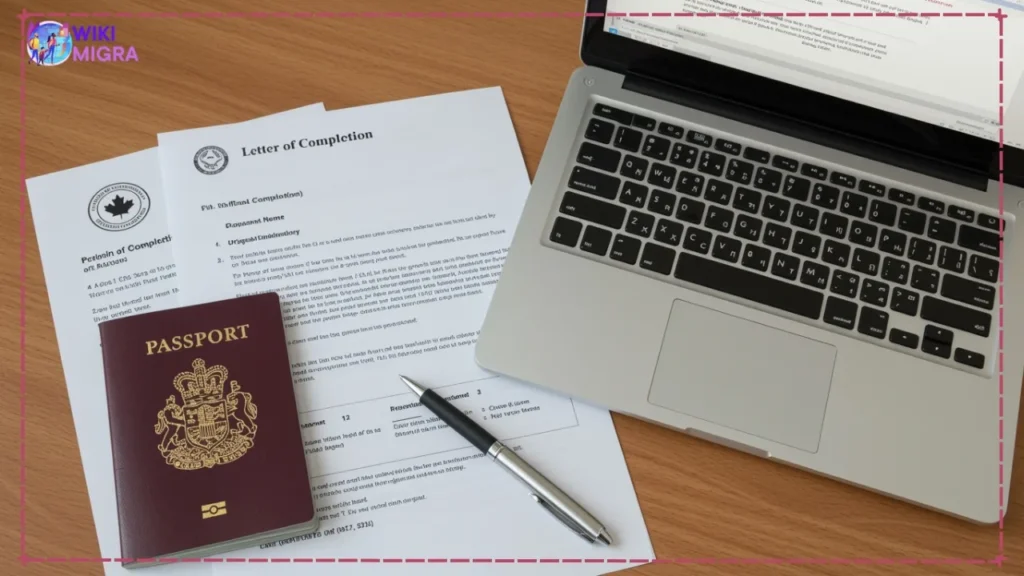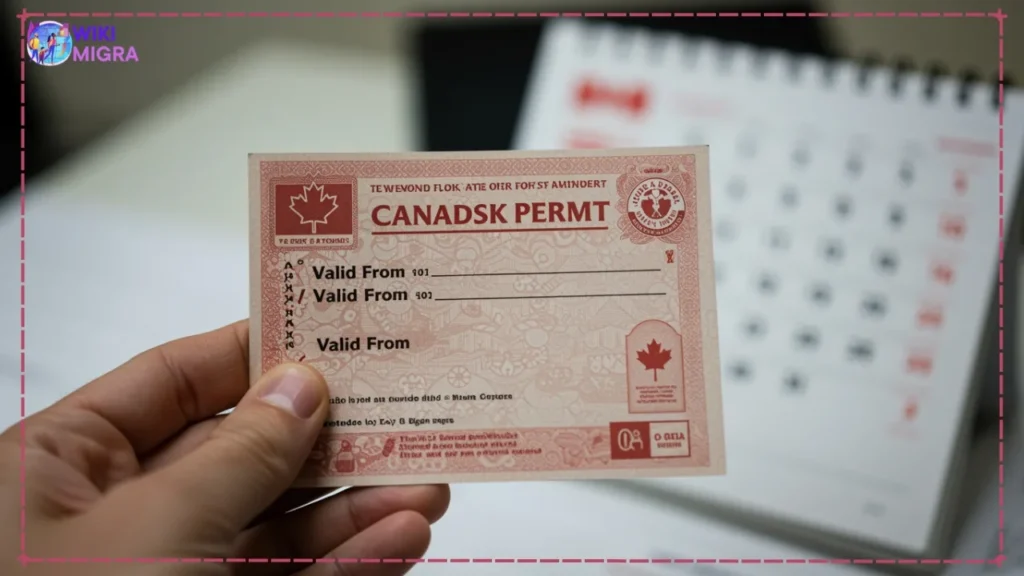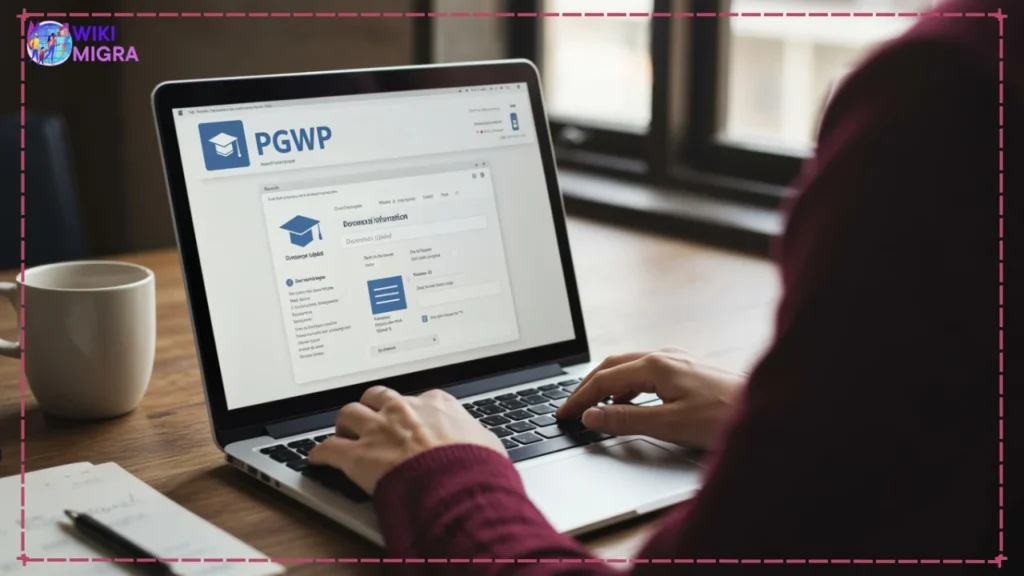10 Essential Steps to Apply for Your Post Graduation Work Permit (PGWP): Complete Guide for 2025

Graduating soon in Canada and dreaming of launching your career here? If you’re an international student approaching graduation, the Post Graduation Work Permit (PGWP) represents your gateway to valuable Canadian work experience and potentially, a path to permanent residency. This comprehensive guide will walk you through everything you need to know about this crucial opportunity that thousands of international graduates leverage each year.
The Post Graduation Work Permit program allows eligible international graduates to work for any employer across Canada, gain valuable experience, and potentially transition to permanent residence. With PGWP processing times varying between 8-12 weeks and requirements evolving, understanding how to apply for your post graduation work permit is essential for planning your post-study work visa application journey in Canada.
Let’s explore what the Post Graduation Work Permit is, why you should consider applying for PGWP, eligibility requirements, documents needed for PGWP, current PGWP processing time, and crucial considerations to help you successfully navigate your post study work visa application.
What Exactly is the Post Graduation Work Permit (PGWP)?
The Post Graduation Work Permit (also commonly referred to as the postgraduate work permit) is an open work permit available exclusively to international students who have completed an eligible program at a Designated Learning Institution (DLI) in Canada. This highly-sought post study work visa allows you to work freely after graduation, unlike other work permits that tie you to a specific employer. When you apply for PGWP, you’re gaining a permit that allows you to:
- Work for any employer in Canada
- Change jobs without applying for a new permit
- Work in almost any location across Canada
- Gain experience in any field (with some exceptions related to medical examinations)
A key feature that distinguishes the PGWP from other work permits is that it’s generally a one-time opportunity. Most international graduates are eligible to receive only one PGWP in their lifetime, making it crucial to understand when and how to maximize this opportunity.
The Canadian government designed this program specifically to retain international talent and provide graduates with a meaningful pathway to gain skilled work experience in the Canadian labor market. This experience, in turn, can significantly strengthen future applications for permanent residency.
Did you know? The PGWP program has evolved significantly since its introduction, with the government expanding eligibility criteria and extending maximum validity periods to attract and retain international talent.
You may be interested in: How to Canada Student Visa Apply Online [Step-by-Step]
Why Apply for a PGWP? The Key Benefits

Gain Valuable Canadian Work Experience
Canadian employers highly value local work experience. The PGWP offers you the opportunity to build your professional portfolio with Canadian experience, which significantly improves your employability both within Canada and internationally. Many employers are hesitant to hire candidates without Canadian experience, and the PGWP bridges this gap for international graduates.
Pathway to Permanent Residence
Perhaps the most compelling reason to pursue a PGWP is its role as a stepping stone to permanent residency. Work experience gained while on a PGWP can directly qualify you for immigration programs such as:
- Canadian Experience Class (CEC): Typically requires at least one year of skilled work experience in Canada
- Provincial Nominee Programs (PNPs): Many provinces prioritize candidates with Canadian education and work experience
- Express Entry: Canadian work experience significantly boosts your Comprehensive Ranking System (CRS) score
Flexibility in Employment
Unlike many other work permits, the PGWP doesn’t require a job offer to apply. This flexibility allows you to:
- Take time to find the ideal position
- Explore different industries and roles
- Build a career path that aligns with your goals
- Change employers without additional government paperwork
Explore Canada Further
The open nature of the PGWP enables you to live and work anywhere in Canada. This provides an excellent opportunity to experience different regions, potentially qualifying you for regional immigration programs with lower thresholds for permanent residency.
Financial Independence
Working full-time on a PGWP allows you to earn Canadian wages, build your savings, pay off student debts, and support yourself independently while establishing your career path.
You may be interested in: Your Ultimate Guide to Canadian Study Permit Requirements [Planning for 2025]
Are You Eligible? Key PGWP Requirements Checklist

Important Disclaimer: Immigration policies and requirements can change. Always verify the most current information on the official IRCC website before making any decisions or submitting applications.
Graduated from a Designated Learning Institution (DLI)
To qualify for a PGWP, you must have completed a program at a Designated Learning Institution. A DLI is an educational institution approved by provincial or territorial governments to host international students.
Not all Canadian educational institutions qualify as DLIs, and not all DLIs offer programs eligible for the PGWP. You can verify whether your institution is a DLI and if your program qualifies by checking the official DLI list.
Program of Study Requirements
Your completed program must:
- Lead to a degree, diploma, or certificate
- Be at least 8 months in duration
- Be from an eligible public or private post-secondary institution
Programs from the following types of institutions generally qualify:
- Public post-secondary institutions (universities, colleges)
- Private post-secondary institutions that operate under the same rules as public institutions
- Private institutions authorized by provincial statute to confer degrees
Program Length and PGWP Validity
The length of your program directly impacts the duration of your PGWP:
| Program Duration | PGWP Validity |
|---|---|
| 8 months to less than 2 years | Same as program length |
| 2 years or more | 3 years |
| Multiple eligible programs | Combined length (if completed within reasonable timeframe) |
Full-Time Student Status
You must have maintained full-time student status during each academic session of your program with some permitted exceptions:
- Final academic session can be part-time
- Authorized leave of absence (properly documented)
- Academic accommodations for disabilities
Application Window
You must apply for your PGWP within 180 days of receiving written confirmation of program completion from your DLI. This confirmation can be in the form of:
- Final transcript
- Official letter from the institution
- Degree, diploma, or certificate
It’s crucial to apply within this window as late applications are generally rejected without consideration of extenuating circumstances.
Valid Study Permit Status
When applying for a PGWP, you must either:
- Hold a valid study permit at the time of application, OR
- Have held a valid study permit during your studies and be applying within the 180-day window
Distance Learning Limitations
There are specific rules regarding online/distance courses and PGWP eligibility:
- Traditional Rule: No more than 50% of your program can be completed through distance learning
- COVID-19 Adaptations: Special provisions were made for students affected by pandemic restrictions
- Current Policy: Always check the latest IRCC guidelines as these policies have evolved significantly
Pro Tip: Keep detailed records of your study permit, program completion documents, and any correspondence with your DLI regarding your program status. These may prove invaluable during the application process.
You may be interested in: 7 Key Stages: Your Ultimate Guide from Canadian Student Visa to Permanent Residence
How Long Will Your PGWP Be Valid?

The validity period of your PGWP directly corresponds to the length of your completed program of study, with some important parameters:
General Rule for PGWP Duration
- Programs 8 months to less than 2 years: PGWP validity equals program length
- Programs 2 years or longer: Maximum 3-year PGWP
- Multiple eligible programs: May be combined for longer validity (subject to specific conditions)
Examples of Program Length and PGWP Duration
| Program Type | Program Length | PGWP Duration |
|---|---|---|
| Certificate | 8 months | 8 months |
| Diploma | 1 year | 1 year |
| Advanced Diploma | 18 months | 18 months |
| Bachelor’s Degree | 3-4 years | 3 years |
| Master’s Degree | 1-2 years | 1-3 years (depending on exact length) |
| Multiple Programs | e.g., 1-year certificate + 2-year diploma | Up to 3 years (if completed within reasonable timeframe) |
Important Considerations for PGWP Validity
- Passport Expiry Date: Your PGWP cannot be issued beyond your passport’s expiration date. If your passport expires sooner than your potential PGWP validity, consider renewing your passport before applying.
- Calculating Program Length: IRCC calculates your program length based on the study dates provided by your DLI in your completion letter, not by the standard duration advertised by the institution.
- Part-Time vs. Full-Time Study: Only periods of full-time study count toward calculating your PGWP validity (with exceptions for final semester).
- Authorized Leaves: Properly documented leaves of absence generally don’t negatively affect PGWP validity calculations.
Important: If you’re close to the threshold between validity periods (e.g., a 22-month program that’s just shy of the 2-year mark for a 3-year PGWP), consult with your institution’s international student office about the exact wording of your completion letter.
You may be interested in: The Ultimate Guide to Canadian Immigration for International Students (Study Permit to PR) [2025 Update]
Applying for the PGWP: Step-by-Step Guide

The application process for a Post Graduation Work Permit requires careful preparation and attention to detail. When you’re ready to apply for PGWP, follow this comprehensive breakdown of the post study work visa application process:
When to Apply
Timing is critical when applying for a PGWP:
- Apply within 180 days: After receiving written confirmation that you’ve completed your program
- Apply before study permit expires: If possible, to maintain implied status
- Don’t apply too early: Wait until you have official completion documentation
The concept of “implied status” is important here. If you apply for your PGWP before your study permit expires, you can remain in Canada and continue working (with restrictions) while your application is processed.
How to Apply for PGWP Online
The vast majority of post graduation work permit applications are submitted online through the IRCC secure portal. When you’re ready to apply for PGWP, follow these steps:
- Create or sign in to your IRCC secure account
- Select “Apply for Post Graduation Work Permit” from available options
- Complete the application form IMM 5710
- Upload all documents required for PGWP application
- Pay application fees
- Review your post study work visa application for completeness
- Submit your application and save your confirmation number
While paper applications are technically possible, online applications are strongly recommended for faster PGWP processing time and easier application tracking. Most successful applicants choose the online route to streamline their post graduation work permit application.
Documents Required for PGWP Application
Understanding exactly what documents are needed for PGWP application success is crucial. Prepare the following essential documents required for PGWP:
- Passport: Copy of your valid passport’s information page
- Photo: Digital photo meeting IRCC specifications (if required)
- Proof of Program Completion:
- Official letter from your DLI confirming program completion
- Final transcripts showing successful completion
- Letter of Explanation: If there are any unusual circumstances about your application
- Application Form: Completed IMM 5710
- Proof of Payment: For application fees
Additional documents needed for PGWP application that may be required:
- Medical examination results (for certain occupations)
- Biometrics confirmation (if previously provided and still valid)
- Provincial/territorial documents (varies by location)
Document Checklist Tip: When preparing your post study work visa application, create a comprehensive checklist of all documents required for PGWP and verify each one before submission to avoid processing delays.
Pro Tip: Create a document checklist specific to your situation and check off items as you gather them. This reduces the risk of submitting an incomplete application.
Fees
Current fees associated with PGWP applications include:
- PGWP Application Fee: $255 CAD
- Open Work Permit Holder Fee: $100 CAD
- Biometrics Fee (if required): $85 CAD
Always verify the current fee structure on the official IRCC fee page as these amounts can change.
Biometrics
Many applicants will need to provide biometrics (fingerprints and photo) as part of their application:
- If you’ve provided biometrics in the past 10 years for a study permit, they may still be valid
- If not, you’ll receive instructions after submitting your application
- Biometrics cost $85 CAD and must be provided at an official collection point
What Happens After You Apply?
Once you’ve submitted your PGWP application, the waiting period begins. Here’s what to expect:
Acknowledgement & PGWP Processing Time
After submission, you’ll receive an Acknowledgement of Receipt (AOR) confirming that IRCC has received your application. The PGWP processing time varies significantly based on several factors:
- Application volume and seasonal backlogs
- Time of year (peak graduation periods see longer processing)
- Your country of citizenship
- Completeness of your application package
Current PGWP processing time can be checked using the IRCC processing time tool. As of our latest update in May 2025, PGWP processing times typically range from 8 to 12 weeks, but this can fluctuate throughout the year. Many applicants receive decisions faster when application volumes are lower.
Processing Time Insight: When you apply for PGWP online with a complete application package, the average processing time has been trending closer to 8 weeks for most applicants, though individual cases may vary.
Working While Waiting (Implied Status)
Many graduates wonder if they can work while waiting for their PGWP decision. The answer depends on your situation:
If you applied before your study permit expired and met these conditions:
- You completed your program of study
- You were eligible to work off-campus during your studies
- You didn’t exceed authorized work hours during your studies
Then yes, you can work full-time under “implied status” while waiting for your PGWP decision.
If your study permit expired before you applied:
- You cannot work under implied status
- You must wait until you receive your PGWP
Important: If your PGWP application is eventually refused and you’ve been working under implied status, you must stop working immediately upon receiving the refusal.
Receiving the Permit
If approved, your PGWP will be sent to you by mail if you’re in Canada. This is why it’s crucial to provide an accurate and current Canadian address in your application.
If there are issues with your application, you may receive:
- A request for additional information
- A procedural fairness letter outlining concerns
- A refusal letter with reasons
Important Considerations & Next Steps

Maintaining Status
Understanding your status in Canada is vital throughout the PGWP process:
- Implied Status: If you applied before your study permit expired, you maintain legal status in Canada while waiting for a decision
- Restoration of Status: If your status has expired (study permit ended before applying for PGWP), you may be eligible to apply for restoration within 90 days, but cannot work during this period
- Visitor Status: In some cases, you may need to transition to visitor status if there are gaps in your documentation
Finding Work
Once you have your PGWP (or while waiting under implied status), focus on securing employment relevant to your field:
- Update your resume to highlight Canadian education and any relevant experience
- Leverage your institution’s career services
- Network with professors, classmates, and industry professionals
- Explore job banks like Job Bank Canada
- Consider joining professional associations in your field
Thinking Ahead: PGWP and Permanent Residence
It’s never too early to start planning your pathway to permanent residence:
- Canadian Experience Class (CEC): Requires at least one year of skilled work experience (NOC 0, A, or B categories) within the past three years
- Provincial Nominee Programs: Many provinces have streams specifically for international graduates with work experience
- Express Entry: The comprehensive ranking system awards significant points for Canadian education and work experience
The type of work you pursue on your PGWP matters significantly. Focus on obtaining positions that:
- Are full-time (30+ hours per week)
- Fall within NOC skill type 0, A, or B (managerial, professional, or technical occupations)
- Can be properly documented for future immigration applications
Common Mistakes to Avoid
Be aware of these frequent pitfalls in the PGWP process:
- Missing the 180-day application window: Once this deadline passes, you’re generally ineligible
- Incomplete applications: Missing documents can cause significant delays or refusals
- Misunderstanding eligibility: Particularly regarding program length and distance learning components
- Working beyond authorized limits: Violating work conditions can jeopardize future applications
- Letting your passport expire: Ensure your passport remains valid throughout the process
- Neglecting to update contact information: Missing important communications can be devastating
Post Study Work Visa Requirements
When discussing post-study work visa requirements, it is essential to consider the country in question, as each nation has its own specific rules and eligibility criteria. Below is a detailed explanation of the requirements for obtaining a post-study work visa in some of the most popular destinations for international students: the United States, Canada, and New Zealand.
United States: Optional Practical Training (OPT) and STEM OPT Extension
In the U.S., international students on an F-1 visa can apply for Optional Practical Training (OPT), which allows them to work temporarily in their field of study after graduation. Here are the key requirements:
General Eligibility for OPT:
- F-1 Visa Status: The student must be on an active F-1 visa.
- Completion of Studies: The applicant must have completed their degree program at an accredited U.S. institution.
- Field of Study Relevance: The job or practical training must be directly related to the student’s major area of study.
- Application Timeline: Students can apply for post-completion OPT up to 90 days before completing their program or within 60 days after completion.
- Employment Authorization Document (EAD): Once approved, students receive an EAD card that permits them to work during the OPT period.
STEM OPT Extension:
For students with degrees in Science, Technology, Engineering, and Mathematics (STEM) fields:
- 24-Month Extension: Eligible students can extend their OPT by 24 months beyond the initial 12-month period.
- Accredited Institution: The degree must be from a U.S.-accredited institution recognized by SEVP (Student and Exchange Visitor Program).
- Employer Requirements: Employers must be enrolled in E-Verify and comply with reporting obligations.
Students should consult their university’s Designated School Official (DSO) to ensure compliance with all application procedures.
Canada: Post-Graduation Work Permit (PGWP)
Canada offers a Post-Graduation Work Permit (PGWP) that allows graduates from eligible Canadian institutions to gain valuable work experience.
General Eligibility:
- Designated Learning Institution (DLI): The applicant must have graduated from a DLI authorized by Immigration, Refugees and Citizenship Canada (IRCC).
- Program Length: The study program must be at least eight months long.
- Full-Time Student Status: Applicants must have maintained full-time enrollment during their studies, except for their final semester.
- Application Deadline: Applications must be submitted within 180 days of receiving confirmation that the program was completed.
- Valid Study Permit: The study permit must have been valid at some point during the 180-day application window.
Duration of PGWP:
The length of the PGWP depends on the duration of the completed study program:
- Programs lasting less than two years but more than eight months grant a PGWP equivalent to the program length.
- Programs lasting two years or more may qualify for a three-year PGWP.
Special cases include accelerated programs and distance learning policies that may affect eligibility.
New Zealand: Post-Study Work Visa
New Zealand provides post-study work visas allowing graduates to stay and work in New Zealand after completing eligible qualifications.
General Eligibility:
- Eligible Qualification: Applicants must have completed a qualification listed under New Zealand’s qualification framework at Level 7 or above (e.g., bachelor’s degree or higher).
- Duration of Stay:
- One year if studying outside Auckland before December 31, 2024.
- Two years if pursuing postgraduate qualifications or meeting specific regional requirements.
- Job Offer Not Required Initially: Unlike other countries, applicants do not need a job offer when applying for this visa.
Applicants should ensure they meet all documentation requirements such as valid passports and proof of qualification completion.
Summary
Post-study work visa requirements vary significantly depending on the country but generally include maintaining legal student status during studies, completing an eligible qualification from an accredited institution, and adhering to specific timelines for application submission after graduation.
What is the post graduate work permit for Sait?
Post-Graduation Work Permit (PGWP) for SAIT:
The Post-Graduation Work Permit (PGWP) is an open work permit that allows international students who graduate from eligible programs at SAIT (Southern Alberta Institute of Technology) to work in Canada for any employer. To qualify, students must meet specific eligibility criteria, including maintaining full-time student status during their studies and graduating from a PGWP-eligible program.
What happens after a post-graduate work permit in Canada?
After a post-graduate work permit (PGWP) in Canada, individuals typically pursue one of the following paths:
- Apply for Permanent Residency (PR): Many PGWP holders transition to PR through programs like the Canadian Experience Class (CEC) under the Express Entry system. Work experience gained during the PGWP period is often crucial for meeting eligibility requirements.
- Extend Work Authorization: While a PGWP cannot be extended, some may qualify for other work permits, such as employer-specific permits or open work permits under specific public policies.
- Further Studies: Some choose to enroll in another program at a Designated Learning Institution (DLI), though this requires obtaining a new study permit.
- Leave Canada: If no further steps are taken, individuals must leave Canada when their PGWP expires unless they change their immigration status.
Conclusion: Maximizing Your Post Graduation Work Permit Opportunity
The Post Graduation Work Permit represents a valuable opportunity for international graduates to transition from student to professional in Canada. By providing a pathway to gain Canadian work experience, the PGWP serves as a crucial bridge between temporary and permanent status for many newcomers.
Successfully navigating the Post Graduation Work Permit process requires careful planning, attention to detail, and a clear understanding of the requirements. Understanding the documents required for PGWP, monitoring PGWP processing times, and knowing exactly how to apply for PGWP can make the difference between a smooth transition and unnecessary complications.
Remember that the work experience gained during your postgraduate work permit period can significantly enhance your prospects for permanent residence in Canada. Make the most of this opportunity by seeking relevant employment, building professional networks, and planning your long-term immigration strategy.
With current PGWP processing time averaging 8-12 weeks, planning your post study work visa application well in advance of graduation ensures you’ll maintain continuous status in Canada and begin your professional journey without unnecessary delays.
Disclaimer & Call to Action
The information provided in this comprehensive Post Graduation Work Permit guide is for general guidance only and may change as immigration policies evolve. Always consult the official IRCC website for the most current and authoritative information regarding the PGWP application process.
For complex situations or personalized advice about your postgraduate work permit application, we strongly recommend consulting with a Regulated Canadian Immigration Consultant (RCIC) or immigration lawyer before proceeding with any post study work visa application.
Take Your Next Steps:
- Verify PGWP Eligibility: Confirm that your institution is on the Designated Learning Institution list
- Prepare Documents Early: Gather all documents required for PGWP before graduation
- Monitor Processing Times: Check current PGWP processing time updates regularly
- Apply Properly: Follow our step-by-step guide when you apply for PGWP
- Stay Informed: Subscribe to IRCC updates about international student policies
- Seek Support: Connect with your institution’s international student office for guidance
Have questions about your specific Post Graduation Work Permit situation? Need help understanding the documents needed for PGWP or navigating the PGWP application process? Leave a comment below or contact us for more information about navigating the post-graduation experience in Canada.
Some articles that may help you:
- My PGWP Was Refused: What Are My Options?
- PGWP Eligibility Deep Dive: Common Pitfalls for International Students
- How Study Breaks Affect Your PGWP Eligibility: A Comprehensive Guide for International Students
- Distance Learning and PGWP: Understanding the Latest IRCC Rules
- Step-by-Step Guide to Filling Out the IMM5710 PGWP Application





